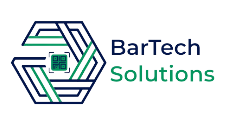
What is RFID?
RFID stands for Radio Frequency Identification. It is a technology that uses radio waves to wirelessly transmit data between a tag or label and a reader. RFID tags consist of a microchip and an antenna, which together enable the storage and transmission of information.
Here’s how RFID technology works:
- RFID Tag: The RFID tag is a small electronic device that contains a microchip and an antenna. The microchip holds the unique identifier or data associated with the item to which the tag is attached. The antenna allows the tag to communicate with RFID readers through radio waves.
- RFID Reader: The RFID reader is a device that emits radio waves and detects the signals sent back by RFID tags within its range. The reader can be a handheld device or a fixed installation, depending on the application.
- Radio Communication: When an RFID tag comes within the range of an RFID reader, the reader emits radio waves that power the tag’s microchip. The tag then responds by transmitting its stored data back to the reader using radio frequency signals.
- Data Exchange: The RFID reader receives the radio signals from the tag and decodes the information contained in the tag’s microchip. This data can include product details, identification numbers, location, or other relevant information.
- Information Processing: Once the reader has collected the data from the RFID tag, it can be processed and used for various purposes. The information can be integrated into software systems, databases, or other applications to track inventory, monitor assets, enable access control, or support supply chain management.
RFID technology offers several advantages over traditional barcode systems. It allows for non-contact and automatic data capture, eliminating the need for line-of-sight scanning. RFID tags can be read from a distance, even if they are not directly visible or physically accessible.
This enables faster and more efficient data collection and inventory management.
RFID has a wide range of applications across industries, including retail, logistics, Healthcare, manufacturing, and asset management. It can be used for inventory tracking, product authentication, anti-counterfeiting measures, access control, supply chain visibility, and more.

Overall, RFID technology enables the wireless transmission of data between RFID tags and readers, providing a powerful tool for real-time tracking, identification, and data capture in various business applications.
If you want to learn more about or looking for RFID hardware devices for your Organization?
Please don’t hesitate to contact us today.
